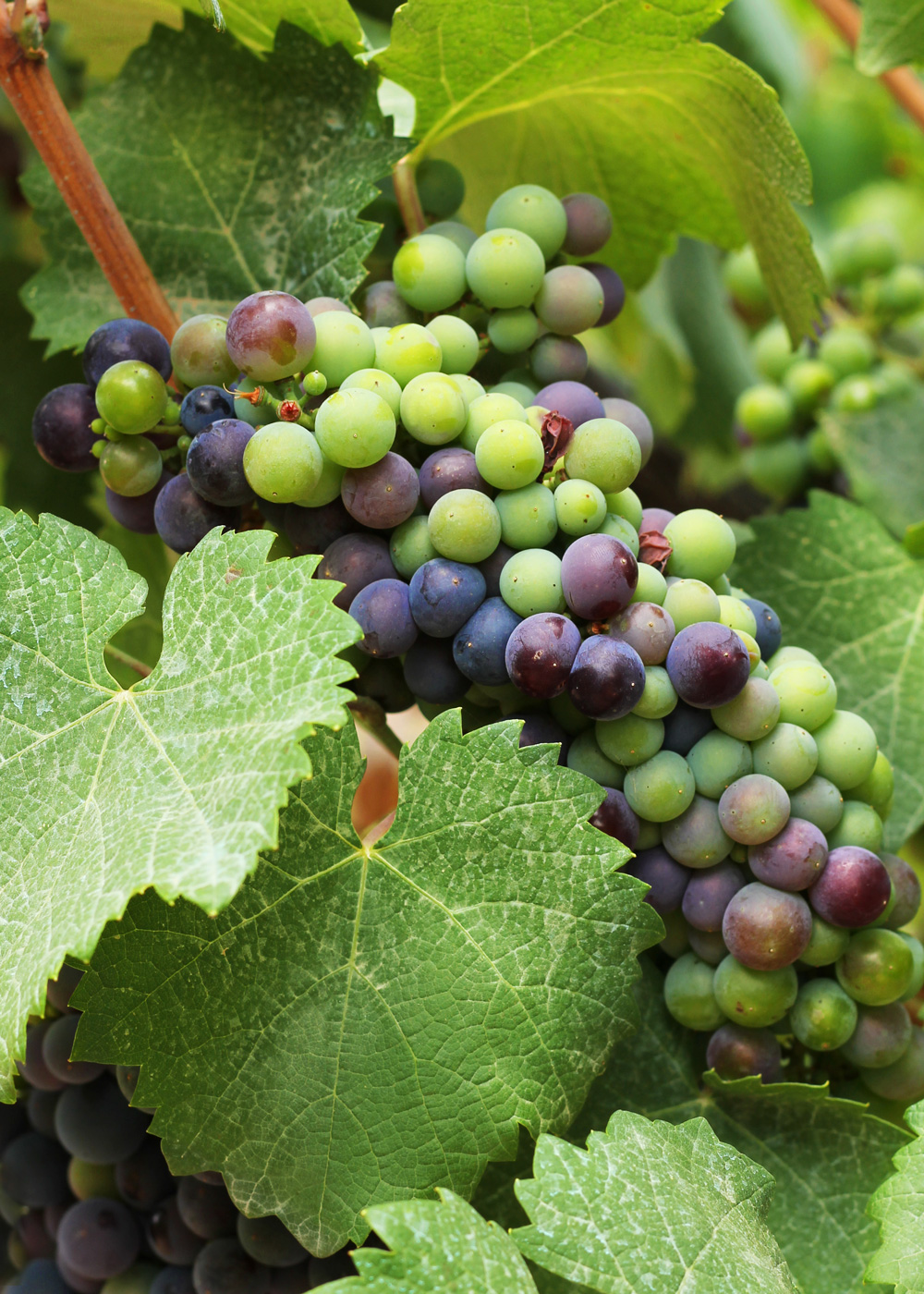Much of the technical information provided by wineries comes in the form of numbers, degrees, and percentages that are bewildering even to highly trained sommeliers. Winemakers are the most scientific people in the wine world, and they have a language of their own for describing what wine tastes like and how it was produced. Whereas a sommelier might say that a wine is pale straw in color with flavors of green apple and lemon, a winemaker would say that it was harvested early in the season at 12.5 degrees Baumé and 3.2 pH. One of the primary aspects of the wine being addressed by both descriptions – through implication – is ripeness.
We all understand what ripeness is. We see it every time we buy a green or yellow banana. We may even have a sense that it’s important in wine, but most of us fail to understand just how important – at least when compared to our understanding of the roles played by grape varieties or oak barrels. The choices winemakers face regarding ripeness are the main determining factors in the color, body, alcohol, sugar, acidity, and tannin of the finished wine. No wonder tech sheets devote so much information to the subject of ripeness!
Definition
So, what is ripeness? From the perspective of the grapevine, ripeness occurs when the grapes are sufficiently sweet to attract animals. For example, when a bird eats a grape, the vine has a chance of spreading its genetic material to a new location through the bird’s digestive system. Ripening begins partway through the growing season, at a stage called veraison, when hormones in the plant initiate a complex enzymatic process of converting carbohydrates to simpler sugars, changing the color of the fruit, and decreasing the overall acidity. In other words: as fruit ripens, it becomes sweeter, less tart, and less green.

Ripeness from a winemaker’s perspective is not a fixed point in grape development, but a spectrum of flavors and characteristics that change throughout the ripening process. Not all grapes ripen the same way or at the same time. Pinot Noir, for example, ripens earlier than Cabernet Sauvignon which is one of the reasons that Pinot thrives in cooler conditions than Cab.
Influencing Factors
Climate and weather are the two main factors influencing the ripening of wine grapes. Generally speaking, the warmer and sunnier the vineyard site, the greater the potential for ripeness. Wineries in cool areas like Germany are limited to grapes that can ripen in relatively cool temperatures and short growing season. These wines tend to have characteristics similar to less ripe fruit, like a lighter color, higher acidity, and lower alcohol (due to lower sugar in the grapes). When wine from a cool climate has sweetness, the alcohol is even lower because sugar is converted to alcohol during the fermentation process.
Wines from warm regions, on the other hand, tend to have characteristics of riper grapes: darker color, lower acidity, and more alcohol (leading to a fuller body). The regions with the greatest potential for ripeness are places with moderate to warm temperatures, plenty of sunshine, long growing seasons, and long summer days, like eastern Washington State.

Winemakers are not entirely at the mercy of Mother Nature when it comes to ripeness. In Germany, they can plant their grapes on south-facing hillsides to maximize exposure to sunlight whereas, in Washington State, they can harvest early in the season before the grapes reach maximum ripeness. Decisions like these allow for broad stylistic variety even among wines from the same area.
Evaluating Ripeness
Traditionally, winemakers would determine the appropriate time to harvest their grapes through simple tasting. Modern winemakers have a variety of additional options for determining their desired ripeness, including specific gravity, measured acidity, and physiological ripeness.
Measuring the density of the grape juice, or “must,” is a reliable way to determine sugar levels, potential alcohol, and therefore ripeness. This density is also referred to as “specific gravity,” “potential alcohol,” or “must weight.” The three most common units for measuring must weight are Brix (used mainly in the New World), Baumé (Used in France and other European countries), and Oechsle (used in Germany).

Acidity is measured in two main ways: TA, which stands for “titratable acidity” or “total acidity,” and pH. TA measures specific kinds of acid in the grapes, which give them a tart flavor, whereas pH measures overall acidity. Most winemakers like to ensure that acid levels don’t fall too much during the ripening process, as it’s essential for balanced wines. In some places, winemakers are permitted to add acid to wine, so they might be less concerned with this measure in the vineyard. Yet another approach to evaluating acidity is to observe the ratio between grape sugar, measured in Brix, and the total acidity. The University of California at Davis has determined that most wines are balanced within the ratio range of 30:1 – 35:1 Brix/TA.
Physiological Ripeness
In recent years, some winemakers have begun to look for something they call “physiological ripeness” to help them determine when to harvest. They judge the grapes on a variety of factors, including how they look and taste, and compare those factors to the sugar, acidity, and tannin. Relying solely on scientific measurements for ripeness can lead to harvesting grapes before their full potential is achieved. Grapes can be ripe in terms of sugar and acid before they finish developing flavors and tannin, so it can be beneficial to leave them on the vine for a so-called “extended hangtime,” thereby allowing them to develop additional complexity. New methods are being developed that will give future winemakers even more tools for judging ripeness, including ways of measuring obscure flavor compounds and colors in the non-visible light spectrum.
Now that you have an introduction to ripeness, you’ll be able to make more sense of information sheets and have a greater appreciation for the wine in your glass.



